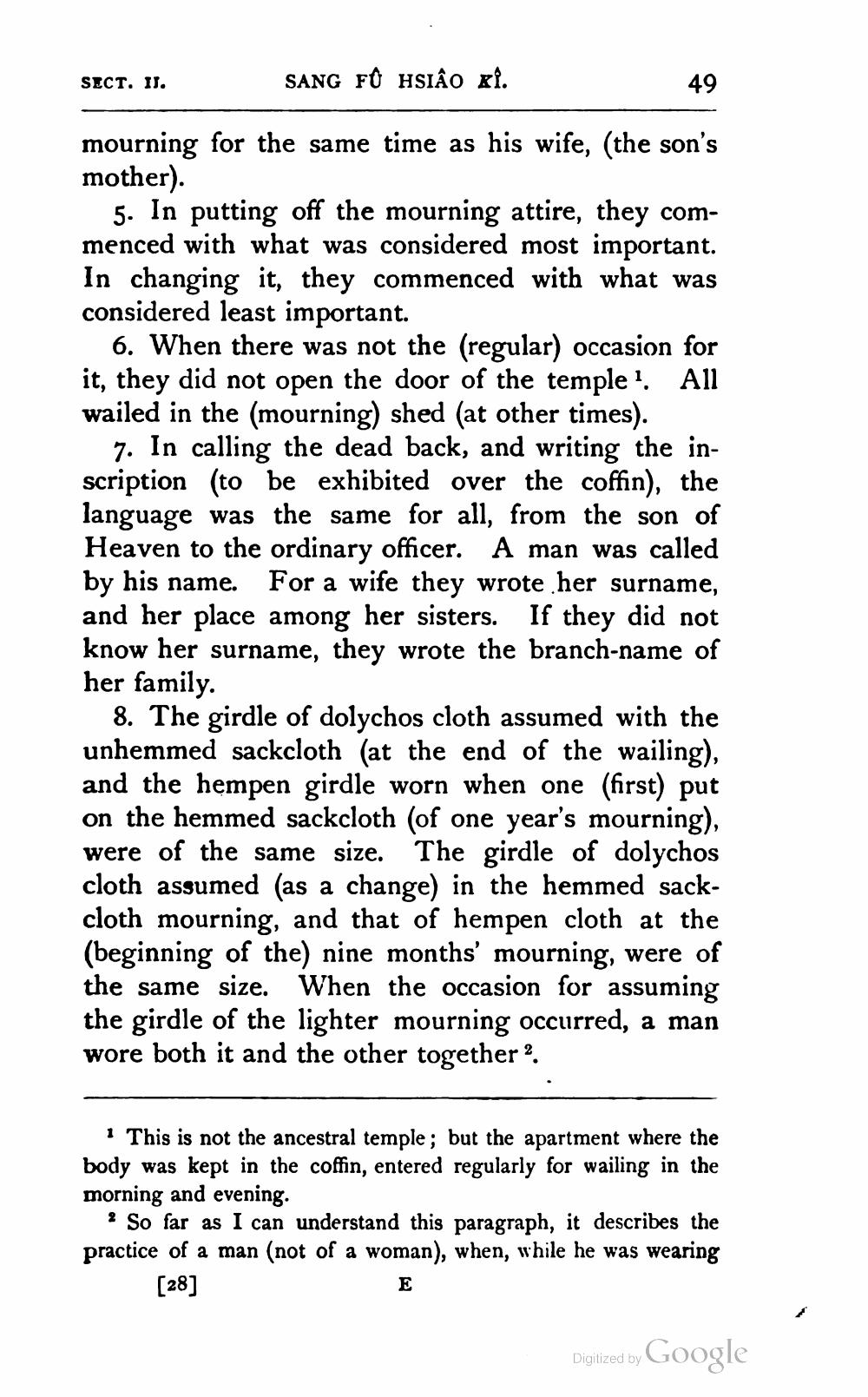________________
SECT. II.
SANG FU ASIÃO xi.
49
mourning for the same time as his wife, (the son's mother).
5. In putting off the mourning attire, they commenced with what was considered most important. In changing it, they commenced with what was considered least important.
6. When there was not the (regular) occasion for it, they did not open the door of the temple 1. All wailed in the (mourning) shed (at other times).
7. In calling the dead back, and writing the inscription to be exhibited over the coffin), the language was the same for all, from the son of Heaven to the ordinary officer. A man was called by his name. For a wife they wrote her surname, and her place among her sisters. If they did not know her surname, they wrote the branch-name of her family.
8. The girdle of dolychos cloth assumed with the unhemmed sackcloth (at the end of the wailing), and the hempen girdle worn when one (first) put on the hemmed sackcloth (of one year's mourning), were of the same size. The girdle of dolychos cloth assumed (as a change) in the hemmed sackcloth mourning, and that of hempen cloth at the (beginning of the) nine months' mourning, were of the same size. When the occasion for assuming the girdle of the lighter mourning occurred, a man wore both it and the other together 2.
1 This is not the ancestral temple; but the apartment where the body was kept in the coffin, entered regularly for wailing in the morning and evening.
? So far as I can understand this paragraph, it describes the practice of a man (not of a woman), when, while he was wearing
[28]
Digitized by Google




